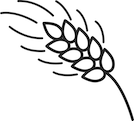Behavioral Health Services for American Indians and Alaska Natives- Module 2 (4 credit hours)
Program Summary: This course examines American Indian and Alaska Native cultures and offers practice-based approaches for behavioral health services. This course is divided into two modules. Module 2 covers Part 1 Chapter 2 of the reading and offers 4 case study vignettes with Vicki, Joe, Marlene, and Philip. Client-Provider Dialogs are given along with Master Provider Notes. A variety of themes are discussed including family, tradition, and identity.
“Never look for a psychological explanation unless every effort to find a cultural one has been exhausted.” – Margaret Mead
This course is recommended for social workers and counselors and is appropriate for beginning and intermediate levels of practice.
Publisher: The Substance Abuse and Mental Health Services Administration
Course Objectives: To enhance professional practice, values, skills, and knowledge by identifying key issues related to behavioral health services for American Indians and Alaska Natives.
Learning Objectives: Describe the Stages of Change Model. Contrast talking Circles and Therapy Groups. Describe the Welcome Home exercise.
Review our pre-reading study guide.
G.M. Rydberg-Cox, MSW, LSCSW is the Continuing Education Director at Free State Social Work and responsible for the development of this course. She received her Masters of Social Work in 1996 from the Jane Addams School of Social Work at the University of Illinois-Chicago and she has over 20 years of experience. She has lived and worked as a social worker in Chicago, Boston, and Kansas City. She has practiced for many years in the area of hospital/medical social work. The reading materials for this course were developed by another organization.





